Nice, I have a full sized Vaughn drag saw which is currently in a logging museum in Northern California. My older brother restored it 20 years ago. The bar is 2 parallel rails about 3 feet long the clamp for the blade mounts on the rails and travels about 2 1/2 feet the whole bar pivots from the rear. The blade is 6 foot long with 2” double cut teeth, the pitman arm is roughly a foot long and drives to the center of the slide. Stroke rate is around 60 per minute.
You are using an out of date browser. It may not display this or other websites correctly.
You should upgrade or use an alternative browser.
You should upgrade or use an alternative browser.
Building a model Drag Saw
- Thread starter Brian Rupnow
- Start date

Help Support Home Model Engine Machinist Forum:
This site may earn a commission from merchant affiliate
links, including eBay, Amazon, and others.
Today was one of those days when I spent more time figuring out how to make some of the parts than I did making the parts. The first three parallelogram arms are semi finished and shown in place.
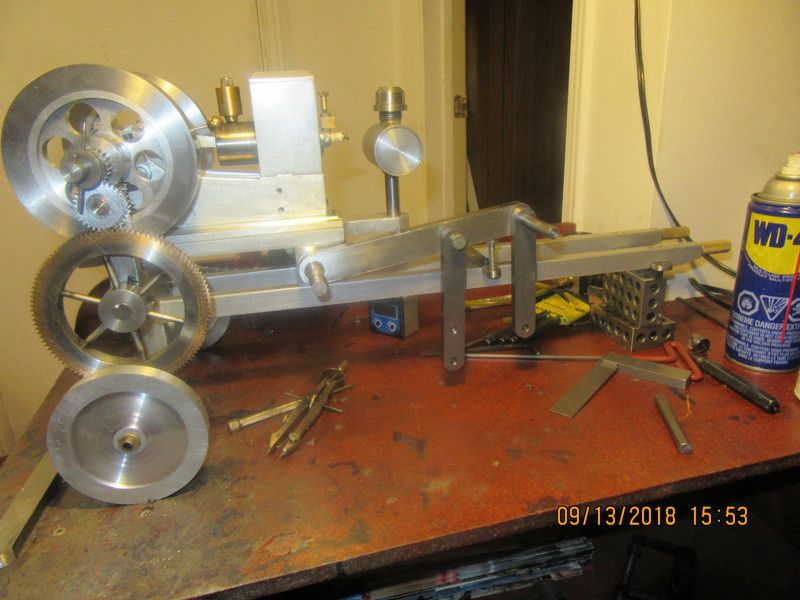

Goody--There are two types of drag saw. the one you are describing, and the other type which I am building, with a set of parallelogram arms. See the very first post in this thread to see the type I am building.---Brian rupnow
nel2lar
Well-Known Member
GoodySo I did a google search for the Vaughn and a YouTube video showed up of my older brother running the saw at a show in Idaho. If you want to watch one in action.
How about a site we can go and see that saw and it's working. The industrial age brought out all kinds of invention. It just goes to show we are always looking for an easier way to do chores that must be done.
I found the videos and they are all so very much alike with added features like the
Ottawa Model T.E. 4HP and 5 HP Drag Saw, which the transport wheels would turn 90° to be used as stabilizers while cutting. Very interesting how one persons mind works to another, I suppose it had to do with patent violations.
Nelson
for those interested in additional saw look here:
https://www.youtube.com/results?search_query=Vaughn+drag+saw
Last edited:
It doesn't look like much, but I have a full days work in these parallelogram arms. Each arm has oilite bronze bushings at the pivot points. The actual pivot pins are 3/8" shoulder bolts. I got very lucky and discovered that one of my slitting saws was the same width as the saw blade I plan on using, so the bottom link is slit and ready to accept the saw blade. Tomorrow I will possibly make the crank arm and the connecting link. I was a bit concerned about there being sufficient weight in the arm assemblies to force the saw into the cut, but now that I have the arms almost finished I see that there will be sufficient weight.



$40.02
$49.99
Becker CAD 12 3D - professional CAD software for 2D + 3D design and modelling - for 3 PCs - 100% compatible with AutoCAD
momox Shop

$89.99
Outdoor Wood Boiler Water Treatment Rust Inhibitor- AmTech 300 & Test Kit
Alternative Heating & Supplies

$39.99
$49.99
Sunnytech Low Temperature Stirling Engine Motor Steam Heat Education Model Toy Kit For mechanical skills (LT001)
stirlingtechonline

$599.00
$649.00
FoxAlien Masuter Pro CNC Router Machine, Upgraded 3-Axis Engraving All-Metal Milling Machine for Wood Acrylic MDF Nylon Carving Cutting
FoxAlien Official

$24.99
$34.99
Bowl Sander Tool Kit w/Dual Bearing Head & Hardwood Handle | 42PC Wood Sander Set | 2" Hook & Loop Sanding Disc Sandpaper Assortment | 1/4" Mandrel Bowl Sander for Woodturning | Wood Lathe Tools
Peachtree Woodworking Supply Inc

$99.99
AHS Outdoor Wood Boiler Yearly Maintenance Kit with Water Treatment - ProTech 300 & Test Kit
Alternative Heating & Supplies
![DreamPlan Home Design and Landscaping Software Free for Windows [PC Download]](https://m.media-amazon.com/images/I/51kvZH2dVLL._SL500_.jpg)
$0.00
DreamPlan Home Design and Landscaping Software Free for Windows [PC Download]
Amazon.com Services LLC

$94.99
$109.99
AHS Woodmaster 4400 Maintenance Kit for Outdoor Wood Boiler Treatment
Alternative Heating & Supplies
Check out this video of a drag saw with parallelogram action, same as the model I am building. Notice that the wheels are NOT turned at 90 degrees, but are positioned the same as the wheels on my model.---Brian
As I say in the attached video, "We're almost ready to rock and roll." I need to cut out my saw blade and machine a lever to operate the clutch and then I think we will be ready to cut up a log.---Brian
And for those of you who asked "Where do you get a blade" and "You know those saws only cut on the pull stroke." Here is where you get the blade with the teeth cutting in the correct direction. About 10 minutes work with a die grinder and an abrasive wheel. I wrapped a piece of steel bar with a wet dish cloth and laid it over the part of the saw I wanted to keep so the heat wouldn't warp it. Now if I'm really lucky, I will be able to carbide two 1/8" diameter holes in it to bolt it on.
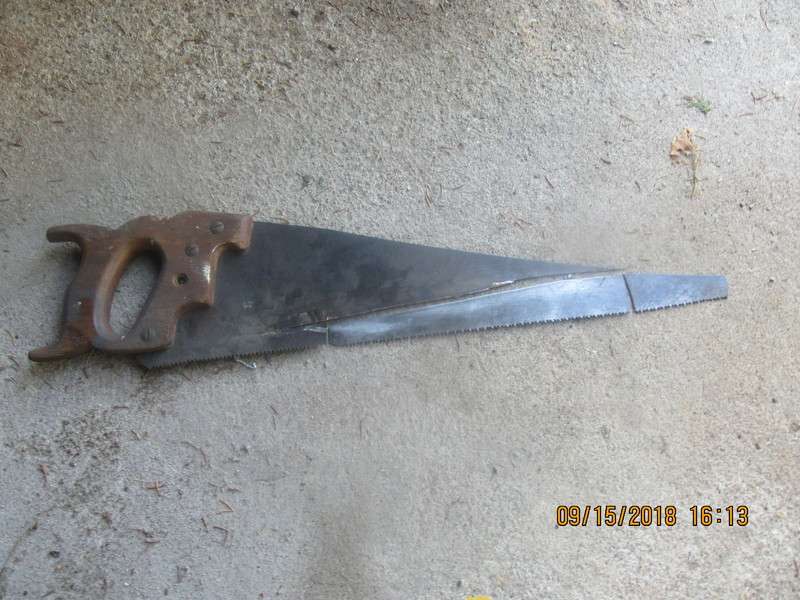

I may have to rename this thing the Pinnochio saw---
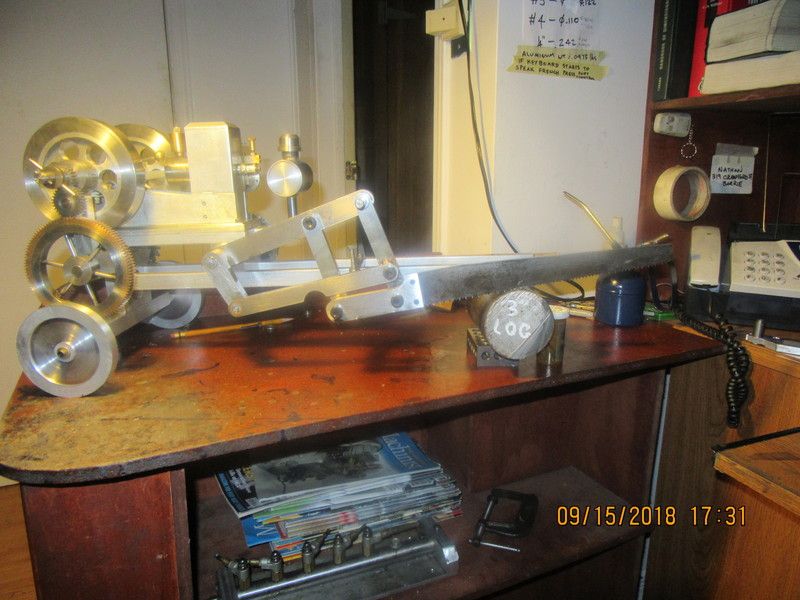

nel2lar
Well-Known Member
Brian
How sweeeeet it is, beautiful. You have done a very nice job on tha Pinnochio Saw.
Can not wait to see it in action. Very nice.
Nelson
How sweeeeet it is, beautiful. You have done a very nice job on tha Pinnochio Saw.
Can not wait to see it in action. Very nice.
Nelson
I have a laymans knowledge of handsaws. My dad was a carpenter when he wasn't lumberjacking, so I know the difference in a cross cut saw and a rip saw. I have a vague notion of what "raker teeth" do. My saw knowledge stops about there, and although I am aware of "pit saws" and "ice saws", I have no idea as to the tooth profile. I have never seen a "real live drag saw" other than a couple of weeks ago when I seen one that wasn't operating at a steam show in Milton Ontario, and it wasn't the type which I am building. You folks have no idea of how desperate I get to find something mechanical that I haven't already built. This has been a fun build, and I am in the home stretch now. I may even give this thing a test drive tomorrow, but only on a pine 2 x 4. I won't make a video until I can find a 3" diameter round of dry cedar or pine with the bark still on it. I still have to build the handle which engages and disengages the dog clutch, but that won't stop me from taking a test drive.
I am about to finish the final parts of this drag saw. If you have followed this post, you will know I am using a dog clutch which is engaged and disengaged by a lever. I have watched two dozen videos of drag saws on YouTube, and I'm still not certain of what type of clutch they used--it isn't clear in the videos. If anyone has detailed knowledge of how these original drag saw clutches operated, now would be a really good time to contact me and let me know. I have heard that they too have lever operated dog clutches, but I have also heard that they had friction clutches which gave them a gentler engagement than a dog clutch. If anyone has this knowledge, I would really appreciate a heads up.---Brian
nel2lar
Well-Known Member
Brian
I was looking back through some of your builds and there it was. Take a look at your sawmill build and the way you engaged it, it might work better on this.
Nelson
I was looking back through some of your builds and there it was. Take a look at your sawmill build and the way you engaged it, it might work better on this.
Nelson
The cone clutch on that sawmill set up works great, but if you looked closely you will see that after the clutch is engaged, there is a spring loaded toggle that pops up and holds the engagement lever in place. And--That spring loaded pop up lever has to be depressed before the handle can release. It works great, but there are a lot of parts there to fit into a simple handle.
Today I finished the dog clutch engagement lever. I realized that I had no way to put in the fancy scallops on each side that are shown in the cad model, because the handle is too long to swing on my lathe faceplate. If I can make it work properly, I may drill a series of cosmetic holes down the face below the hole that fits over the clutch diameter. Right now it works fine as far as engaging g/disengaging the dog clutch goes while the engine is not running, but there is nothing to make it stay engaged or disengaged. I have been warned that it is difficult to disengage the dog clutch while the engine is running. If that is true, perhaps I can just install a light spring that makes the lever disengage when no other forces are applied to it.
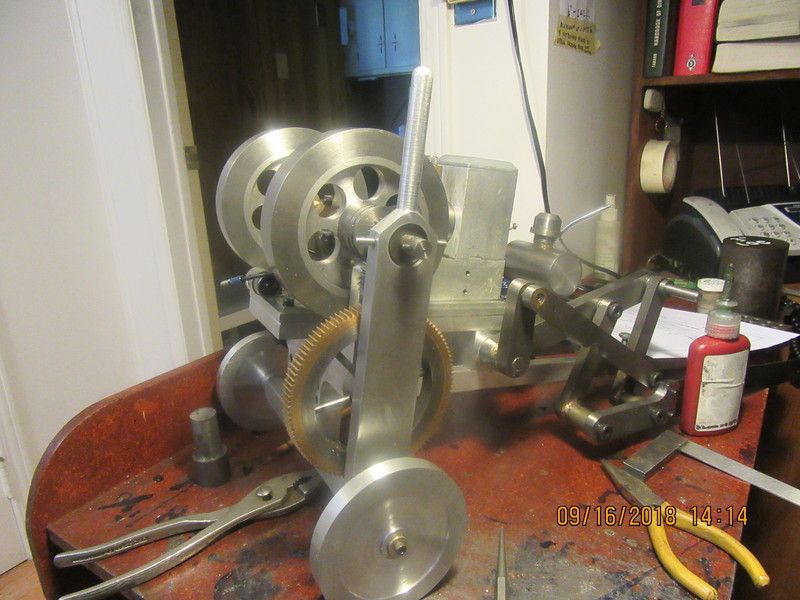

nel2lar
Well-Known Member
Brian
Another idea. Do you think a ball detent down through the handle with a couple small spots on the shaft to engage in and out.
Just an idea.
Nelson
Another idea. Do you think a ball detent down through the handle with a couple small spots on the shaft to engage in and out.
Just an idea.
Nelson
Nelson--If there was a greater range of movement, I would do that. The movement at the clutch components is less than 1/4", so the handle doesn't move enough near the pivot point to use a ball detent.
nel2lar
Well-Known Member
Brian
Another one down,
Good luck
Nelson
Another one down,
Good luck
Nelson
So--We have confirmation that everything goes round and round and up and down when the saw is operating but not actually cutting anything. Next step will be for me to tramp around in the woods behind my place and find a real 3" diameter log to cut.
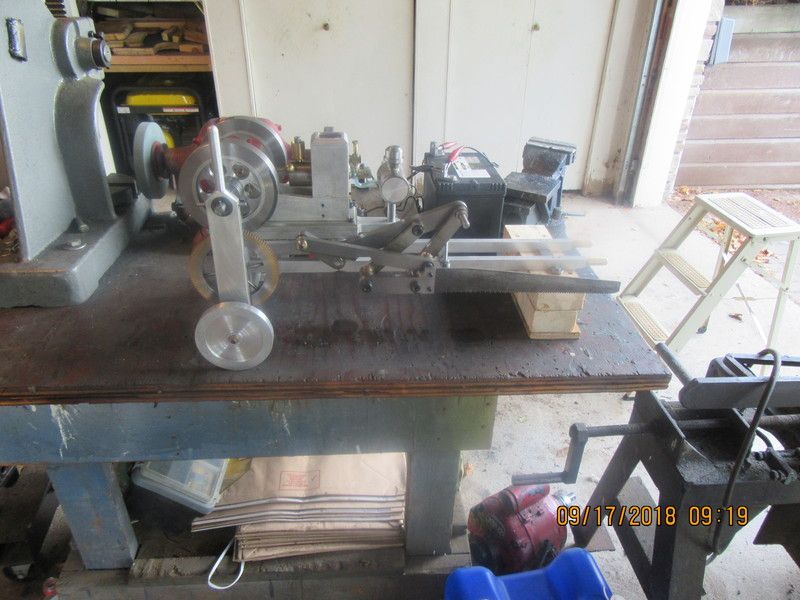

Similar threads
- Replies
- 61
- Views
- 14K
- Replies
- 95
- Views
- 13K
- Replies
- 69
- Views
- 9K


















































